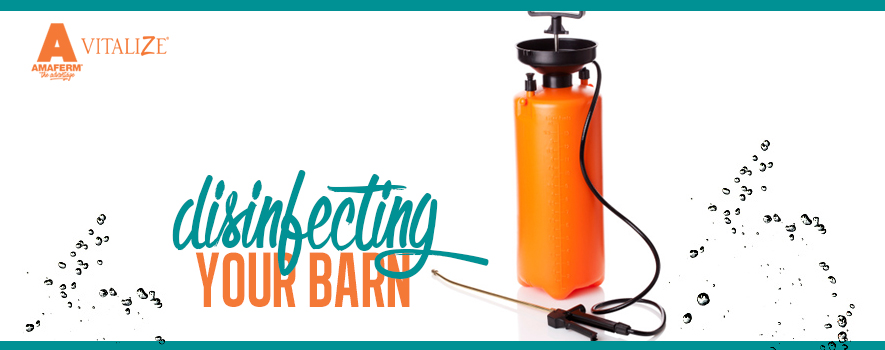
There are two main ways to prevent disease resulting from infection by a pathogen in horses: vaccination and disinfection. Here we focus on disinfection, arguably the most important component of disease prevention as vaccines have not been developed for all disease-causing pathogens. Ideally, stables should be disinfected on an annual basis.
One of the most important things to consider when disinfecting your barn is the type of cleaner that will be used. The type of cleaner that will be best for your situation depends on the materials used to construct your barn. For example, chlorine bleach may be an excellent choice for some stall types, but will not work well for wooden stalls. If you have metal stalls, you should also be wary of cleaners that may be corrosive. If possible, we recommend asking your veterinarian which disinfect would be best for you.
Once you have selected a disinfectant, remove all organic matter (hay, shavings, manure, etc.) and other removable items. Start washing and scrubbing the surfaces from top to bottom with your cleaning solution. This will allow dirt to flow away from parts of the surface that you have already washed. Don’t worry if you don’t have a power washer. In fact, high pressure water can aerosolize bacteria and undermine your disinfection effort.
You will also want to disinfect buckets, feed tubs, brushes and any other tools that are used in the barn. Disinfecting these items is much simpler than clearing stalls to disinfect the entire barn, and may be done more frequently to prevent the spread of pathogens. Buckets, brushes and feed tubs can be disinfected using hot water mixed with anti-bacterial and anti-microbial dish soap. Be sure to work the soap into the grooves of the bucket and the bristles of the brushes. Afterwards you can soak the items in a Lysol-water mixture to ensure they are germ-free.
Another easy step to minimize pathogens in the barn is to wash saddle pads, blankets, leg boots and tack frequently. If possible, wash these in a washing machine with hot water and detergent. Leather tack can be easily cleaned with a non-destructive cleanser and then conditioned and sealed with a leather oil. You can also disinfect bits quickly and safely by soaking them in Listerine mouth wash and then rinsing them with hot water.
These disinfection tips are vital for avoiding the spread of pathogens in the barn. However, sometimes pathogens withstand cleaning and disinfection. If you suspect these pathogens are causing illness in your barn, separate and quarantine the horse(s) you believe to be ill and contact your veterinarian immediately.


